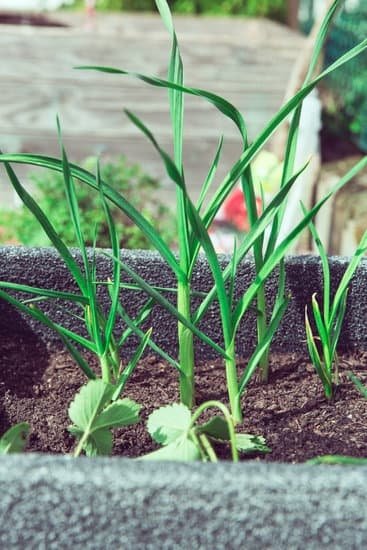Are you looking for some inspiration to transform your outdoor space? If so, consider diving into the world of veggie gardens ideas. Not only do vegetable gardens provide a sustainable source of fresh produce, but they also offer a therapeutic and rewarding experience for gardeners of all levels. There is something truly special about nurturing plants from seedlings to harvest and enjoying the fruits of your labor straight from the garden to your plate.
One of the greatest advantages of having a vegetable garden is the ability to control what goes into your food. By growing your own vegetables, you can ensure that they are free from harmful pesticides and chemicals, making them not only healthier but also tastier. Additionally, veggie gardening allows you to connect with nature, reduce stress levels, and promote physical activity through gardening tasks.
Whether you have a backyard oasis, a small balcony, or simply a sunny windowsill, there are veggie garden ideas suitable for every space. From raised beds to container gardening to vertical planters, there are endless possibilities for creating a thriving vegetable garden even in limited areas. With careful planning and strategic design, you can optimize your space to maximize both yield and aesthetic appeal in your very own veggie haven.
Location and Space
When it comes to starting a vegetable garden, one of the first considerations is choosing the right location and space for your plants to thrive. Whether you have a spacious backyard, a cozy balcony, or just a windowsill, there are plenty of veggie garden ideas that can suit your needs and preferences.
Backyard Gardens
For those fortunate enough to have a backyard, the options for setting up a vegetable garden are endless. When selecting a spot in your yard, look for an area that receives ample sunlight throughout the day as most vegetables require at least 6-8 hours of sunlight to grow effectively. Additionally, ensure that the chosen spot has good drainage to prevent waterlogging which can lead to root rot in plants.
Balcony Gardens
If space is limited but you still want to enjoy the benefits of growing your own vegetables, consider creating a balcony garden. Opt for container gardening by using pots, window boxes, or hanging baskets to grow your veggies vertically and make the most of your available space. Choose compact varieties of vegetables such as cherry tomatoes, lettuce, herbs, and peppers that thrive in containers and don’t require too much room.
Windowsill Gardens
For those living in apartments or limited on outdoor space altogether, windowsill gardens are a perfect solution. Utilize windowsills with direct sunlight exposure for growing herbs like basil, mint, chives, or even small plants like microgreens or dwarf tomatoes. With proper care and attention to watering and sunlight requirements, you can still enjoy fresh produce right from your windowsill.
Planning and Design
Layout
One of the first steps in planning a vegetable garden is determining its layout. Whether you have a spacious backyard or limited balcony space, arranging your plants strategically can maximize sunlight exposure, airflow, and accessibility for maintenance. Consider factors such as proximity to water sources, ease of harvesting, and potential shading from nearby structures or trees. A well-thought-out layout can enhance the visual appeal of your veggie garden while promoting healthy growth for your plants.
Raised Beds and Containers
For those with limited ground space or poor soil quality, raised beds and containers offer viable solutions for growing vegetables. Raised beds provide better drainage, warmer soil temperatures, and higher yields due to their controlled environment. Containers, on the other hand, allow for flexibility in placement and mobility if needed. When selecting containers or building raised beds, ensure they are deep enough to accommodate root growth and filled with nutrient-rich soil for optimal plant development.
Companion Planting
Companion planting involves growing different plants together to benefit each other in various ways. By pairing compatible vegetables based on their growth habits, pest-repelling properties, or nutrient requirements, you can create a harmonious ecosystem within your veggie garden. For example, planting basil near tomatoes can improve tomato flavor while deterring pests like aphids. Researching companion planting combinations specific to your chosen veggies can help optimize their growth and overall health in your garden space.
Incorporating thoughtful planning and design elements into your vegetable garden not only enhances its functionality but also creates a visually pleasing outdoor space that provides an abundance of fresh produce. By carefully considering layout options, utilizing raised beds or containers effectively, and embracing companion planting techniques, you can set the foundation for a thriving veggie garden that will yield bountiful harvests throughout the seasons.
Plant Selection
When it comes to planning and designing your dream veggie garden, choosing the right plants is a crucial step towards a successful harvest. Consider the climate and season of your location to determine which vegetables will thrive in your garden. Some plants prefer cooler temperatures, while others require more sun or shade. Personal preferences also play a significant role – think about what you love to eat and what you have space for in your garden.
To help you make informed decisions on plant selection for your veggie garden, here are some popular vegetables that are versatile and relatively easy to grow in many different climates:
- Tomatoes: Whether you have a sunny spot in the backyard or even just a balcony with enough sunlight, tomatoes are a favorite among home gardeners. They come in various sizes and colors, making them a fun addition to any veggie garden.
- Lettuce: Perfect for beginners as they grow quickly and can be harvested multiple times throughout the season. Lettuce varieties such as romaine, mesclun mix, and butterhead can add freshness to your meals straight from the garden.
- Bell Peppers: These colorful veggies thrive in warm conditions and can be grown in containers if space is limited. Bell peppers are not only delicious fresh but also wonderful when grilled or roasted.
Remember that personal preferences also play a significant role in deciding what to plant in your veggie garden. If there are specific herbs or vegetables that you love cooking with, prioritize those when selecting plants for your garden.
Mixing different plants can also create balance within the ecosystem of your garden, utilizing companion planting techniques for natural pest control and improved growth. With these ideas in mind, you’ll be on your way to creating a beautiful and bountiful vegetable garden tailored to suit your needs and tastes.
Soil Preparation
Soil quality is a crucial factor in the success of any vegetable garden. Good soil provides the necessary nutrients for healthy plant growth and development. Before planting your veggies, it’s essential to test the soil pH and nutrient levels to determine if any amendments are needed.
Adding organic matter such as compost, manure, or peat moss can improve soil structure and fertility, ensuring your plants have everything they need to thrive. Additionally, using mulch on top of the soil helps retain moisture, suppress weeds, and regulate soil temperature.
Composting is another key aspect of soil preparation for veggie gardens. It not only reduces kitchen and garden waste but also creates nutrient-rich humus that improves soil health. You can start a compost pile in your backyard or use a compost bin to recycle organic materials like fruit scraps, vegetable peelings, coffee grounds, and yard clippings. The resulting compost can be mixed into the garden soil or used as a top dressing to provide natural fertilization for your plants.
Fertilization plays a vital role in maintaining nutrient balance in vegetable gardens. While organic matter like compost is beneficial for long-term soil health, supplemental fertilizers may be necessary to meet the specific needs of different vegetables at various stages of growth.
Understanding the nutrient requirements of your plants is crucial in selecting the right fertilizer type and application method. By following proper fertilization practices tailored to your veggie garden’s needs, you can promote robust plant growth, increase fruit production, and prevent nutrient deficiencies that may limit overall yield.
| Soil Preparation Tips | Benefits |
|---|---|
| Test soil pH and nutrient levels | Determine amendments needed |
| Add organic matter like compost | Improves soil structure |
| Start a compost pile or use a bin | Recycles organic waste |
| Use mulch on top of the soil | Retains moisture and suppresses weeds |
Maintenance and Care
Starting a veggie garden is not just about planting seeds and waiting for them to grow. Once your garden is established, it requires regular maintenance and care to ensure a bountiful harvest. One of the most crucial aspects of maintaining a thriving vegetable garden is watering.
Vegetables generally require at least 1 inch of water per week, either from rainfall or irrigation. It’s important to water deeply and infrequently to encourage deep root growth and prevent diseases caused by standing water.
Weeding is another essential task in veggie gardens that can’t be overlooked. Weeds compete with your vegetables for nutrients, sunlight, and water, so it’s vital to keep them under control. Regularly inspect your garden for weeds and remove them by hand or using mulch to suppress their growth. Additionally, practicing good sanitation measures by cleaning up debris and fallen leaves can help reduce the risk of pests and diseases in your vegetable garden.
Pest control is a common challenge faced by many vegetable gardeners. From aphids to caterpillars, there are various insects that can damage your crops if left unchecked. Consider using natural remedies like neem oil or introducing beneficial insects like ladybugs to combat pests organically.
Furthermore, keeping an eye out for early signs of pest infestations and taking prompt action can prevent significant damage to your veggie plants. Consistent monitoring and proactive measures are key to successfully managing pests in your vegetable garden.
| Maintenance Tasks | Guidance |
|---|---|
| Watering | Provide at least 1 inch of water per week through rainfall or irrigation, watering deeply but infrequently. |
| Weeding | Regularly inspect the garden for weeds, remove them promptly by hand or using mulch as a suppressant. |
| Pest Control | Use natural remedies like neem oil, introduce beneficial insects, monitor for pest infestations regularly. |
Harvesting and Storage
Harvesting fresh vegetables from your own garden can be an incredibly rewarding experience. Not only does it provide a sense of accomplishment, but it also ensures that you are consuming the freshest, most nutrient-packed produce possible. When it comes to harvesting your veggies, timing is key. Here are some tips on when and how to harvest different types of vegetables:
- Leafy greens such as lettuce and spinach should be harvested when the leaves are young and tender. Simply cut the outer leaves, allowing the inner leaves to continue growing for future harvests.
- Root vegetables like carrots and radishes are ready to be pulled from the ground when they have reached their mature size. Carefully dig around the base of the plant to avoid damaging the roots.
- Fruit-bearing veggies such as tomatoes and peppers should be harvested when they have reached full color and size. Gently twist or cut them from the plant to avoid any damage.
Preserving excess produce is a great way to enjoy your homegrown vegetables long after the growing season has ended. Canning, freezing, and pickling are popular methods of storing vegetables for later use. Here’s how you can preserve your harvest:
- Canning involves processing vegetables in jars at high heat to kill any bacteria and create a vacuum seal that prevents spoilage. This method is ideal for preserving items like tomatoes, green beans, and pickles.
- Freezing is a quick and easy way to store veggies while maintaining their flavor and nutrients. Simply blanch your vegetables (briefly boiling them before plunging into ice water) before freezing them in airtight containers or freezer bags.
- Pickling involves submerging vegetables in a brine solution made of vinegar, water, salt, sugar, and spices. This preservation method adds tangy flavor to your veggies and works well with cucumbers, green beans, and peppers.
By following these harvesting tips and preservation techniques, you can make the most out of your veggie garden’s bounty throughout the year. Whether enjoying fresh salads in the summer or savoring homemade pickles in the winter, your homegrown produce will always add a delightful touch to your meals.
Problem-Solving
In the world of veggie gardens, facing challenges such as diseases, pests, and environmental factors is inevitable. However, with the right knowledge and solutions at hand, these issues can be effectively addressed to ensure the success of your vegetable garden. One key aspect to combatting common problems is prevention – starting with selecting disease-resistant varieties and practicing crop rotation to minimize potential threats.
Pests like aphids, caterpillars, or slugs can wreak havoc on your veggie garden if left unchecked. Implementing natural pest control methods such as introducing beneficial insects like ladybugs or using neem oil can help keep these unwanted visitors at bay. Additionally, creating physical barriers like row covers or companion planting certain herbs can deter pests from damaging your precious crops.
Environmental challenges such as extreme weather conditions or poor soil quality can also impact the health and growth of your vegetable plants. By regularly monitoring the moisture levels in the soil, providing adequate drainage, and amending the soil with organic matter, you can create a more hospitable environment for your veggies to thrive.
And don’t forget the power of mulching – it not only helps retain moisture and suppress weeds but also regulates soil temperature to protect your plants from sudden temperature fluctuations.
In conclusion, while challenges may arise in veggie gardens, armed with the right strategies and know-how, you can overcome them effectively. Remember that each issue presents an opportunity to learn and improve your gardening skills.
With proper planning, care, and problem-solving techniques in place, you will be rewarded with a bountiful harvest from your vegetable garden that not only nourishes your body but also feeds your soul. So dive into the world of veggie gardens ideas with confidence and watch as your green thumb flourishes.
Frequently Asked Questions
What Is a Good Layout for a Vegetable Garden?
A good layout for a vegetable garden involves considering factors like sunlight, water accessibility, and spacing between plants. It is advisable to group vegetables with similar needs together and provide pathways for easy access and maintenance.
What Vegetables Grow Well Together?
Some vegetables grow well together due to their complementary attributes. For example, planting corn with beans can benefit both crops as the beans fix nitrogen in the soil that corn plants need. Carrots also pair well with tomatoes since they have different root depths.
What Are the Easiest Veggies to Grow in Garden?
The easiest veggies to grow in a garden are typically low-maintenance plants that are resilient and adaptable. Some examples include lettuce, radishes, green beans, and zucchini. These vegetables are relatively pest-resistant and don’t require extensive care or resources to thrive.

Welcome to my gardening blog! I am passionate about plants and enjoy sharing my knowledge and experiences with others. In this blog, I will write about everything related to gardening, from tips on how to get started to updates on my own garden projects.





